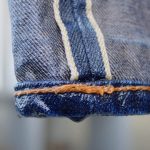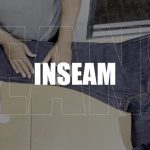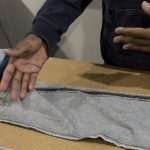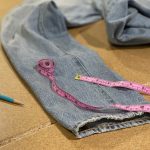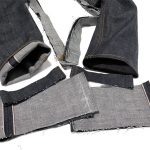The first brand in our new lineup was TCB Jeans, a company out of Kojima, Japan that builds its reputation on craftsmanship, historical research, and dedication to the original spirit of American denim.
Read More →
The leg opening measurement is a critical factor in how your jeans fit over your shoes and shape your overall look. Whether you’re shopping online, comparing styles, or getting your jeans tapered, knowing how to measure the leg opening properly ensures accurate sizing and a better fit.
In this guide, we’ll break down the correct method for measuring the leg opening on jeans—just like we do in our professional denim alteration shop at Williamsburg Garment Company.
📏 What Is the Leg Opening on Jeans?
The leg opening is the width of the bottom hem of a pant leg. This measurement determines how fitted or wide the jeans will fall over your shoes. Slim, straight, bootcut, and wide-leg jeans all have different leg opening sizes, which impact the overall silhouette of the jeans.
🔥 Why Does It Matter?
✅ Helps compare different fits when buying jeans online
✅ Essential for tapering alterations to ensure a balanced look
✅ Impacts how jeans sit on top of shoes
🛠 Step-by-Step: How to Measure the Leg Opening on Jeans
Follow these simple steps to accurately measure the leg opening of your jeans.
1️⃣ Lay the Jeans Flat
- Place your jeans on a flat surface, like a table or the floor.
- Smooth out any wrinkles, but do not stretch the fabric.
🔽 See the diagram below for proper positioning:
[Insert drawing: Jeans laid flat with a focus on the hem area]
2️⃣ Align the Hem Evenly
- Make sure both layers of fabric at the bottom hem are lined up evenly.
- Some jeans, especially washed or worn pairs, may have twisting in the leg—try to align them as close to their natural shape as possible.
🔽 Illustration showing the hem properly aligned:
[Insert drawing: Close-up of the bottom hem, ensuring both sides are even]
3️⃣ Measure Across the Bottom Hem
- Use a soft measuring tape and place it edge to edge across the leg opening.
- Do not curve or wrap the tape—measure in a straight line.
- Write down this measurement.
🔽 Example of correct measuring technique:
[Insert drawing: Measuring tape laid straight across the hem from one edge to the other]
4️⃣ Double the Measurement
- Since jeans are measured flat, you’ll need to double the number to get the full leg opening circumference.
- Example: If your measurement is 8 inches, the total leg opening is 16 inches.
🚨 Common Mistakes to Avoid
🔴 Not laying the jeans completely flat – Wrinkles and folds can throw off your measurement.
🔴 Measuring diagonally – Always measure straight across for accuracy.
🔴 Ignoring leg twisting – Some jeans may have a twist in the leg seam due to shrinkage or wash effects. Align them properly before measuring.
👖 How the Leg Opening Affects Fit
The leg opening measurement is key to understanding different jean styles:
- Slim Fit Jeans – Narrow leg opening (usually 12″–14″)
- Straight Fit Jeans – More room at the ankle (14″–16″)
- Bootcut Jeans – Slight flare to fit over boots (16″–18″)
- Wide-Leg Jeans – Loose fit with a larger leg opening (18″+)
📢 Thinking about tapering your jeans? If you want a smaller leg opening, professional tapering is the best way to achieve a clean, proportional fit. Check out our denim tapering service for expert alterations.
🎥 Watch the Video: Measuring the Leg Opening
For a full demonstration, watch our step-by-step video on how to measure the leg opening on jeans featuring Maurice Malone of Williamsburg Garment Company.
📌 Subscribe for more denim fit and alteration guides!
This blog post is now optimized for readability, SEO, and usability with step-by-step instructions and custom drawings to assist readers. I’ll generate the requested illustrations now. Stay tuned! 🎨📏
You might be interested in
If you’ve ever typed how to take in the waist of jeans into Google, you’ve probably seen a lot of
The first brand in our new lineup was TCB Jeans, a company out of Kojima, Japan that builds its reputation
Washing raw denim has long been a topic of debate. Some purists believe in waiting as long as possible, while
When it comes to buying jeans—especially online—getting the right inseam measurement is crucial for a proper fit. Whether you’re checking

Washing raw denim has long been a topic of debate. Some purists believe in waiting as long as possible, while others argue that washing enhances the fabric’s character. But knowing how to wash raw denim jeans properly can make all the difference in maintaining the integrity of the denim while preserving those hard-earned fades.
In their latest video, Benzak Denim Developers demonstrate their recommended method for washing raw denim for the first time, using a well-worn pair of BO2 Straight jeans made from their 10-year anniversary denim. They cover everything from prepping your jeans before the wash to selecting the right machine settings—ensuring your denim stays in top shape without unnecessary shrinkage or fading.
If you’ve ever wondered when to wash, why washing matters, or most importantly, how to wash raw denim jeans, this video lays it all out. Watch below to see how a year of wear transforms after a proper wash.
You might be interested in
If you’ve ever typed how to take in the waist of jeans into Google, you’ve probably seen a lot of
The first brand in our new lineup was TCB Jeans, a company out of Kojima, Japan that builds its reputation
The leg opening measurement is a critical factor in how your jeans fit over your shoes and shape your overall
When it comes to buying jeans—especially online—getting the right inseam measurement is crucial for a proper fit. Whether you’re checking
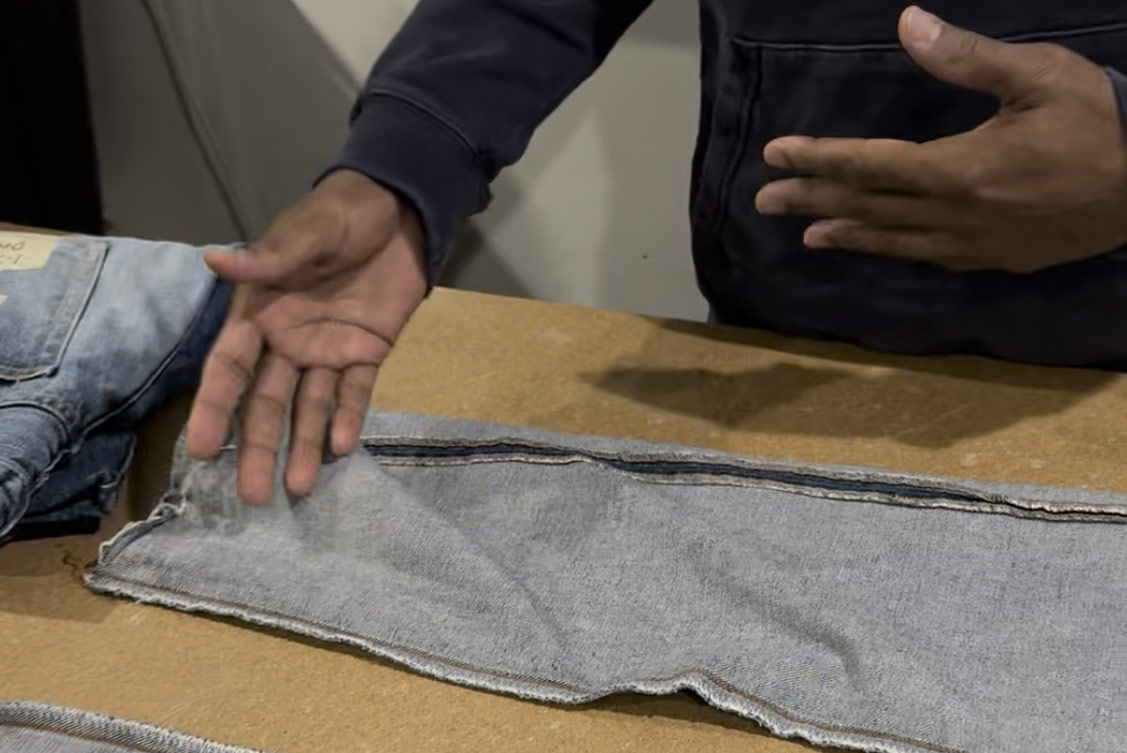
Got a twisted leg on your jeans? If one leg seam always seems to drift to the front or back, you’re dealing with a classic issue called “leg twist.” It’s a common problem in denim, often caused by fabric shrinkage or improper sewing.
In our first video, I explain the two main reasons why jeans legs twist: poor sewing at the factory and uneven fabric shrinkage, or sometimes a mix of both.
In this video, I’ll show you exactly how we professionally fix a twisted leg on jeans, ensuring that they fit comfortably with seams that stay straight. Using expert techniques and specialized machinery, we rework the leg (tapering it) to correct the twist, making your jeans feel just right again.
Watch as I walk you through the step-by-step process of how to identify leg twist, why it happens, and what it takes to fix leg twist in jeans effectively.
Whether you’re curious about denim alterations, experiencing a twisted leg on your favorite jeans, or simply want to know how to get your jeans looking right, this video is for you!
You might be interested in
If you’ve ever typed how to take in the waist of jeans into Google, you’ve probably seen a lot of
The first brand in our new lineup was TCB Jeans, a company out of Kojima, Japan that builds its reputation
The leg opening measurement is a critical factor in how your jeans fit over your shoes and shape your overall
Washing raw denim has long been a topic of debate. Some purists believe in waiting as long as possible, while
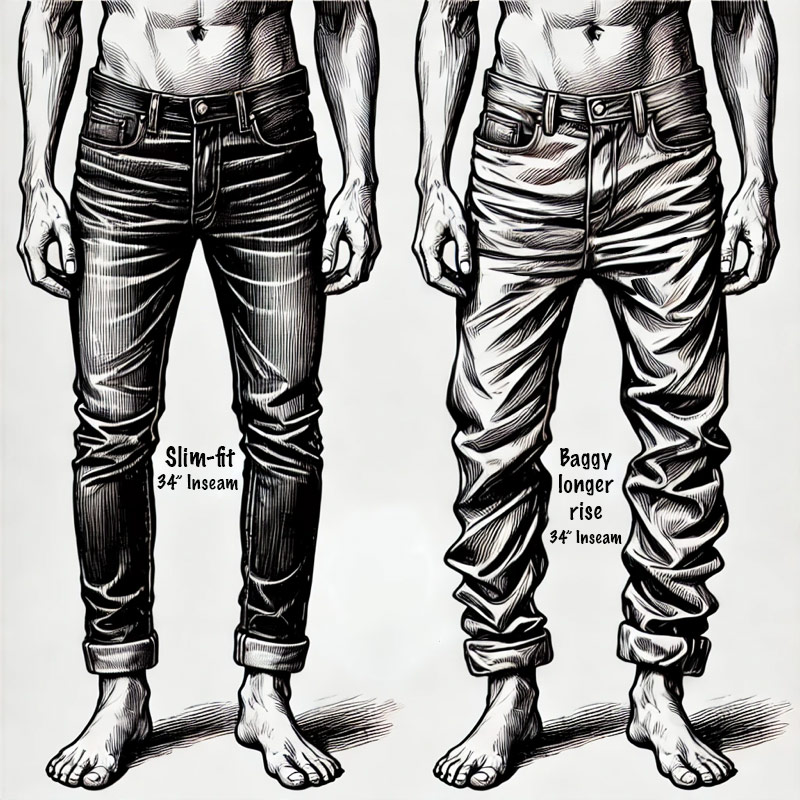
We have extensive experience hemming jeans and pants, as well as providing fittings to numerous customers. One of the things we often hear from those who request the same inseam without going through a fitting session is that they ordered the same inseam across their various jeans and pants, but some came out longer or shorter than others. Therefore, when a customer arrives with multiple jeans or pants and requests the same length throughout the styles, we explain why it could be a mistake.
The same inseam length can look different on various styles of jeans and pants. For instance, jeans or pants with identical waist measurements and inseam lengths but different rise measurements will fit differently. A pair with a 1-inch longer rise may result in a hem that falls 1 inch lower.
Similarly, the waist opening measurement affects where the jeans or pants sit on your body. Larger waist openings cause them to sit lower on your hips, making them appear longer even if the rise and inseam are the same.
Moreover, the labeled waist size doesn’t always match the actual waist measurement, and even the same size in the same brand can vary. While the same brand and style are more likely to fit the same, it’s not always guaranteed.
For those seeking consistency in the positioning of their jeans and pants, it is advisable to invest some extra time in separately fitting each pair. It would be a mistake to assume that the same length would yield the same results across styles. Therefore, always measure each pair individually for hemming.
You might be interested in
If you’ve ever typed how to take in the waist of jeans into Google, you’ve probably seen a lot of
The first brand in our new lineup was TCB Jeans, a company out of Kojima, Japan that builds its reputation
The leg opening measurement is a critical factor in how your jeans fit over your shoes and shape your overall
Washing raw denim has long been a topic of debate. Some purists believe in waiting as long as possible, while
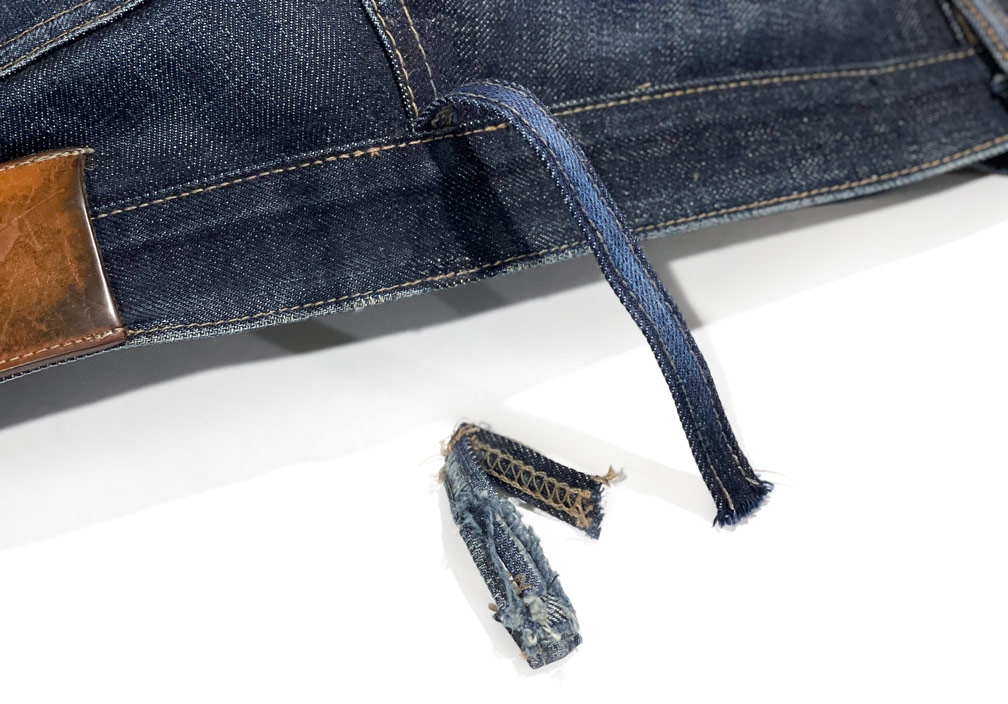
Repairing Belt Loops: Why Quality Matters
Belt loops are one of those essential details on your pants that you probably don’t think about—until one rips off, that is. Whether you’re dealing with jeans, workwear, or your favorite pair of chinos, a broken belt loop can be a real inconvenience. And while you might think, “I can sew that back on myself,” replacing belt loops isn’t as straightforward as it seems.
Sure, home sewing kits and patch jobs might seem like a quick solution, but the reality is that unless you’ve got the right tools and techniques, the results can look sloppy. A DIY job often lacks the durability of professional stitching, leading to issues like weak attachment, uneven loops, or mismatched stitching. Similarly, while some tailors may offer repairs, they often work with lighter fabrics and simple straight stitching, which isn’t quite suitable for the heavy-duty wear of jeans or workwear.
For example, jeans and other tough materials like twill, canvas, or corduroy use a special attachment called a bar tack to secure belt loops. This technique reinforces the stress points, making them durable enough for everyday wear and tear. A typical tailor using a standard sewing machine may not have the equipment to replicate this level of strength.
When done correctly, replacing a belt loop involves using industrial-grade machinery that can handle thick fabric layers, particularly at the seam, where multiple layers overlap. For as little as $10, you can reattach your broken loops at Williamsburg Garment Company, and for $20, new replacement loops can be crafted and installed.
To learn more about our professional belt loop repair service, visit our page for additional details on how we can help you get your pants back in top shape without the hassle of DIY fixes or poor-quality repairs.
By leaving it to the pros, you ensure a clean, durable fix that blends seamlessly with your garment, maintaining its integrity and style for the long haul.
You might be interested in
Got a twisted leg on your jeans? If one leg seam always seems to drift to the front or back,
Nick English from Stridewise visited our studio at 67 West Street to expertly tailor his jeans at the waist. Watch
How to measure the inseam of twisted-leg jeans is made clear in our video lesson. Learn how to handle this
Who better to explain the two meanings of tapered jeans and pants.




